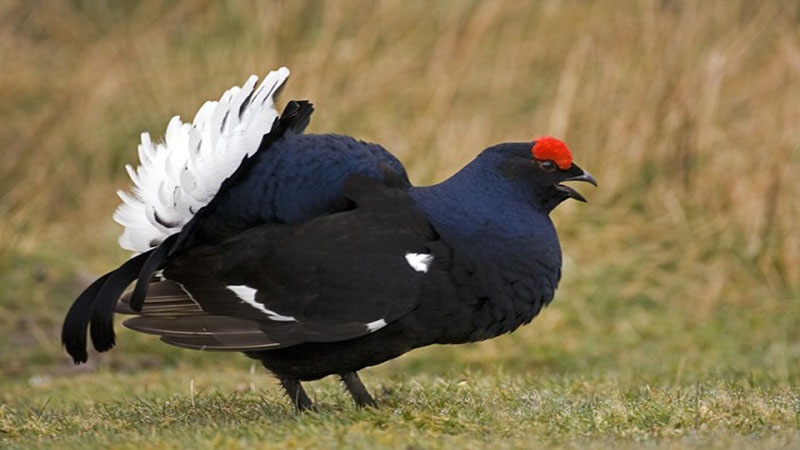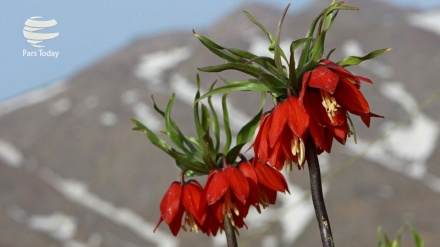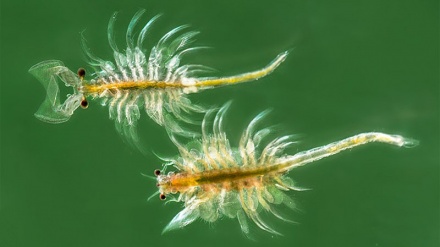Iran’s rare animal and plant species (17)
Roughly 220 bird species have lived in Arasbaran region, which has been announced as a conserved region by UNESCO as of the year 1976.
One of these bird species is a pretty bird called black grouse, which is globally famous. In accordance with the Islamic Republic of Iran’s rules and regulations on environment, black grouse is an endangered bird. Today, we introduce this rare bird.
Black grouse is a local Iranian bird which resides in Arasbaran region, North Azarbaijan Province, in northwestern Iran, highly resembling Caucasian black grouse. Black grouse is considered to be the rarest bird in Iran. Meanwhile, it should be noted that black grouse does not just reside in Iran and also exists in Eastern Europe, and within countries such as Georgia, Russia, Turkey, Azerbaijan Republic, and Armenia.
This bird lives among bushes and meadows of mountainous regions. However, it migrates to low-altitude forests in the winter season, and builds nests underneath short bushes or next to rocks. This bird was identified in the 1960s, when Drek Scott published a book on Iranian birds with the cooperation of UNESCO. Thereafter, significant importance was attached to this bird in the national and international domains.
Black grouse is rarely spotted throughout the year with the exception of spring season, within which it is observed in open air throughout forests. The length of this bird’s body stretches from 40 to 48 centimeters, and is considered as a large bird. The male black grouse maintains black feathers, with bluish green hues, while next to its wings two white spots, and above its eyes, a red spot is observed. The female black grouse is smaller than the male black grouse, while a large number of latitudinal dark stripes are observed on its dark brown feathers. The male black grouse usually weighs around 800 grams up to one kilogram, while the female black grouse nearly weighs 800 grams.
In the spring season, after sunrise, the male black grouse showcases its abilities such as flying up to the height of 5.1 meters, and opening its tail feathers like a huge crown, for female black grouse. This bird flies swiftly, while continuously moving its wings. Black grouse feeds on seeds, tree roots, and blossoms, and usually builds nests underneath short bushes or next to rocks. This rare bird is highly sociable and usually lives collectively within flocks in the fall and winter seasons.
The mating season of black grouse usually starts in mid-March and lasts until early May. The female black grouse normally hatches eleven to twelve eggs, and rests on its eggs for 20 to 24 days, from mid-May to early June. Black grouse usually has three to four offspring.
Iran’s Environment Protection Organization has safeguarded black grouse for the past 45 years. In the view of experts, poaching has taken place in limited regions of the black grouse habitats. However, the most important threat posed against this endangered bird is the excessive livestock grazing in black grouse habitats; deforestation, and destruction of the habitats of this rare bird by mankind.
Currently, one of the most important goals of Islamic Republic of Iran Environment Protection Organization is to protect and save this unique bird. Thus, this organization has made every effort to protect this bird in northwestern Iran, with the cooperation of the International Union for Conservation of Nature. Additionally, recruitment of trained personnel, containment of poachers; and implementation of managerial and research projects, are some of the other large-scale plans that Iran’s Environment Protection Organization has carried out in order to protect this rare bird. Encouragement of locals to take part in protection of wildlife habitats and reinforcement of non-governmental organizations are some of the other measures which can assist the survival of black grouse and other rare animal species.
MR/SS



